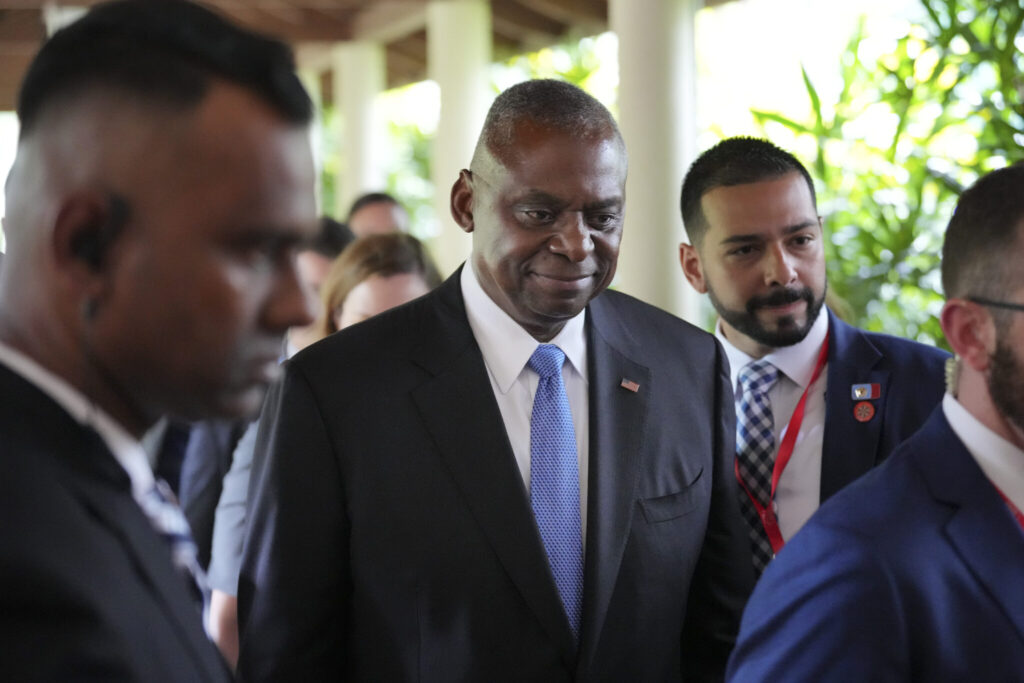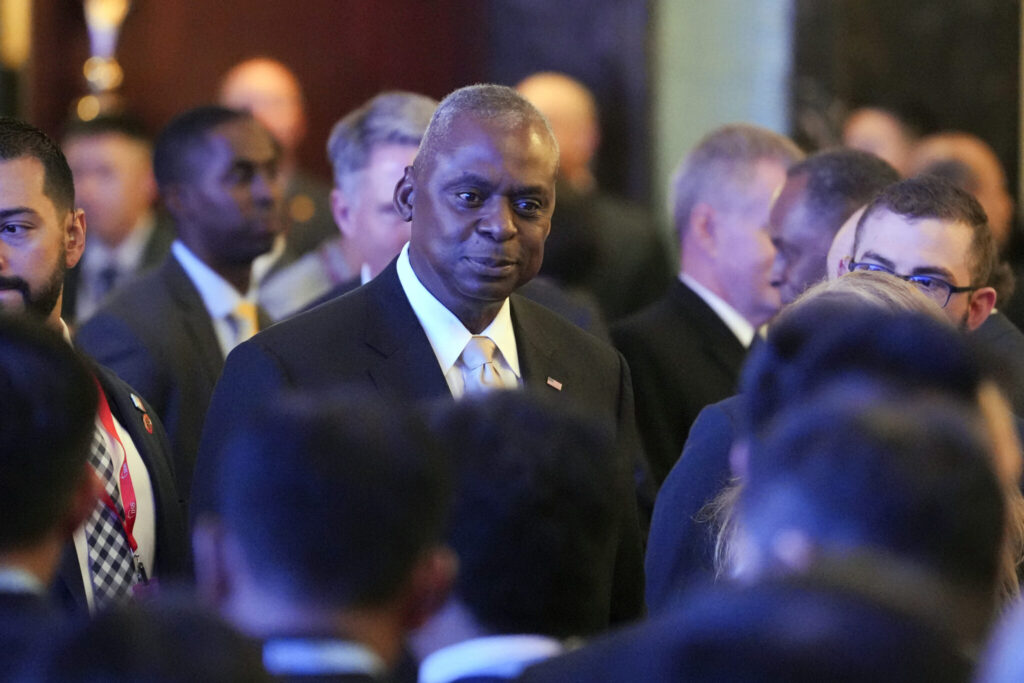The U.S. Navy aircraft carrier strike group that for months has launched crucial strikes against Houthi rebels in Yemen to protect military and commercial ships in the Red Sea and Gulf of Aden will remain in the region for at least another month, according to U.S. officials. U.S. Defense Secretary Lloyd Austin signed the order last week to extend the four ships’ deployment for a second time, rather than bring the carrier, the USS Dwight D. Eisenhowe r, and its three warships home. The other ships in the strike group are the USS Philippine Sea, a cruiser, and two destroyers, the USS Gravely and the USS Mason. All together they include about 6,000 sailors.
Quick Read
- Pentagon chief Lloyd Austin has extended the deployment of the USS Dwight D. Eisenhower aircraft carrier strike group in the Red Sea for at least another month due to ongoing Houthi attacks.
- The strike group includes the USS Philippine Sea, USS Gravely, and USS Mason, totaling about 6,000 sailors, and has been crucial in protecting military and commercial ships in the region.
- This extension, the second since their deployment from Norfolk, Virginia in October, means the sailors and the carrier’s Air Wing will not return home until mid-summer.
- The decision underscores the importance of the U.S. naval presence in maintaining security and deterring threats, particularly from Iran-backed Houthis in Yemen, in the vital transit route through the Red Sea and Gulf of Aden.
- The strike group has participated in operations to protect vessels from Houthi attacks, which surged as part of the group’s efforts related to the conflict in Gaza, despite the targets often having little connection to the war.
- The ships are also part of Operation Prosperity Guardian, a multinational mission to ensure the security and freedom of navigation in the region.
The Associated Press has the story:
Pentagon chief extends deployment of aircraft carrier, ships in Red Sea as Houthi attacks go on
Newslooks- WASHINGTON (AP) —
The U.S. Navy aircraft carrier strike group that for months has launched crucial strikes against Houthi rebels in Yemen to protect military and commercial ships in the Red Sea and Gulf of Aden will remain in the region for at least another month, according to U.S. officials.
U.S. Defense Secretary Lloyd Austin signed the order last week to extend the four ships’ deployment for a second time, rather than bring the carrier, the USS Dwight D. Eisenhowe r, and its three warships home. The other ships in the strike group are the USS Philippine Sea, a cruiser, and two destroyers, the USS Gravely and the USS Mason. All together they include about 6,000 sailors.
The decision means the sailors and the carrier’s Air Wing won’t be home until the middle of the summer, according to the officials, who spoke on condition of anonymity to discuss a decision not made public. The officials declined to provide exact dates.
A normal ship deployment lasts for about seven months, and the ships left their homeport of Norfolk, Virginia, in October. Austin approved the first order to extend their deployment about four weeks ago.

Austin had weighed the decision for a further extension for some time. Navy leaders routinely press to bring ships home in order to maintain a repair schedule and give sailors a needed break. But U.S. Central Command leaders have long argued that having a carrier in the region is critical for international security, including as a deterrent to Iran.
In recent months, the ships have played a critical role in protecting commercial and military vessels from a dramatic surge in attacks in the Red Sea and Gulf of Aden by the Iranian-backed Houthis in Yemen. And officials say that a significant U.S. naval commitment to the region sends a strong signal to the commercial shipping industry that vessels can get protection as they travel the crucial transit route through the Red Sea, from the Suez Canal to the Bab el-Mandeb Strait.
About 12% of the world’s trade typically passes through the waterway that separates Africa and the Arabian Peninsula, including oil, natural gas, grain and everything from toys to electronics.
The Houthis have attacked ships since November, saying they want to force Israel to end its offensive in the Gaza Strip against Hamas. But the ships targeted by the Houthis have largely had little or no connection to Israel, the U.S. or other nations involved in the war. The rebels have also fired missiles toward Israel, though they have largely fallen short or been intercepted.
The Eisenhower and its strike group have been involved in routine operations against the Houthis all year. They also have participated in five major joint missions with British forces to target dozens of the militant group’s drones, missile launchers and other facilities and targets.
The ships are also spearheading Operation Prosperity Guardian, which was announced by Austin in December as a multinational mission to ensure security and freedom of navigation in the Red Sea and Gulf of Aden.
On Thursday, for example, F/A-18 fighter jets off the Eisenhower struck an array of targets in Yemen, in response to a recent increase in attacks by the group. And other ships in the strike group also launched missiles as part of the operation.
Any decision to bring the carrier home would leave the region without the ship-based fighter jets, and commanders would have to rely more heavily on land-based aircraft or other warships, which don’t have fighter jets, to take out Houthi drones or other munitions that are preparing to launch.
According to Lt. Cmdr. Lauren Chatmas, the strike group’s aircraft have flown more than 12,100 sorties, totaling over 27,200 flight hours, and they’ve launched more than 350 air-to-surface weapons and more than 50 air-to-air missiles. The warships have each traveled more than 55,000 miles, and they’ve launched more than 100 Standard and Tomahawk missiles. In all, the strike group has gone after about 430 either pre-planned or dynamic targets in its mission to defend U.S., coalition and merchant ships.







